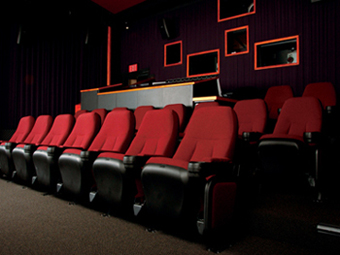Why bringing it all under one roof may not make the most economic sense right now.
HR Savings, Plus Access to Top-Tier Talent
The biggest problem with having in-house staff is that you have to pay them to be in-house, which comes with salaries, taxes, benefits and associated HR expenses. Then you have intangible expenses related to regulatory compliances, insurance, employee training and legal as well as managing risks pertaining to recruitment and termination. Also, attracting the industry’s top-tier talent is an on-going administrative process. Outsourcing post allows clients access to a broad base of creative, technical and experienced talent on demand-the industry’s best are most likely found at home in a facility environment. Beyond the hiring of top talent (editors, colorists, artists, mixers, engineers) there is an added benefit of reducing or eliminating support cost, such as outlays in accounting, operations and scheduling.
Infrastructure and TI Savings
Building a post-production infrastructure is an expensive and time-consuming endeavor. Power needs, special HVAC, electrical grounding specific to high-end-sensitive equipment, room ergonomics, along with sonic considerations, are just some of the up-front hard costs. Moreover, these infrastructure build-outs are considered tenant improvements (TI) and used by localities to justify increases in taxes immediately-more intangible expenses to avoid. As technology changes, sometimes as quickly as within 24 months, this infrastructure must remain in constant construction and renovation. Investing in infrastructure makes no sense when a challenged economy cannot justify or sustain the cost
Hardware Savings and More
Outsourcing post production allows clients to eliminate capital expenditures, such as asset/data management and storage, information technology (IT), infrastructure build-outs, equipment maintenance/upgrades, and mitigate property taxes. As improvements and replacement of post-production equipment hasten, the standard five-year depreciation schedule is no longer applicable to equipment that could be obsolete in two years or less. Why take the hit when you can let your local post facility do it for you?
Tax Benefits
Reliance on a full-service post facility gives the client the ability to streamline and reduce tax liabilities. Instead of amortizing the cost of a post production operation, contracting a post vendor may allow the client to deduct the expense in its entirety.
Strategic Considerations
Top networks and distributors already outsource to production companies and independent producers for content. By outsourcing post production, studios and networks can free up valuable time to focus primarily on strategy and planning. Programming decisions, distribution, marketing and sales are the network’s core business. Focusing on day-to-day post-production operations is a brain drain for the client. Some believe that post production is simply an NLE on a desktop, where every post function from editorial, color, effects, titles and audio can be accessed. Finished content that results from this workflow, however, is painfully obvious to most viewers. In an ever-increasing competitive ratings environment, proper post finishing has never been more critical. Outsourcing post-production makes good dollars and sense especially in a tight economy. It improves client cash flow, allows for operational flexibility, lets the client keep an eye on the “big picture,” reduces costs and gives its programs a competitive edge-technically and economically.
Dennis Ho is the president of Digital Jungle Post Production, a 25,000 square foot facility in Hollywood that offers full post workflows for 4K, 2K, HD and SD.

Digital Jungle’s DI Theater

Digital Jungle’s storage backbone


Sections: Business
Topics: Column/Opinion
Did you enjoy this article? Sign up to receive the StudioDaily Fix eletter containing the latest stories, including news, videos, interviews, reviews and more.
Leave a Reply